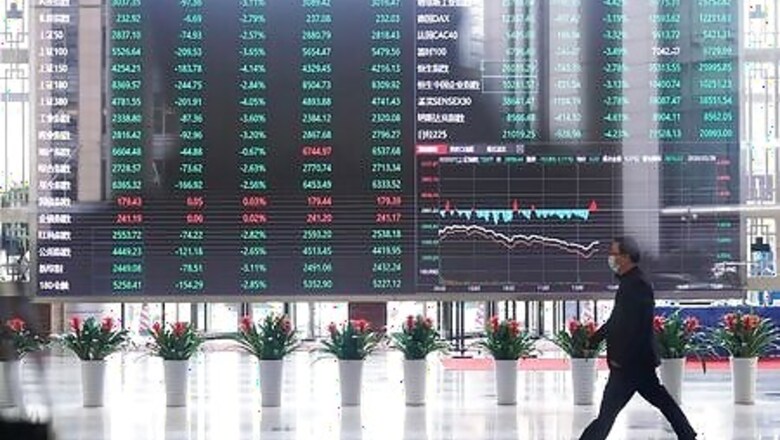
views
As Chinese shares power on to new highs, investors are reminded of the distressing 2015 market crash and yet many are drawing comfort from a tacit government endorsement of the rally and a more resilient economy this time.
The main Shanghai Composite index has risen about 23% over the past five months as China took the lead in a global recovery from the coronavirus pandemic, and is second to just the U.S. Nasdaq market in its performance this year.
But that upsurge has pushed valuations close to the 2015 highs, from which the market crashed to half its worth in six months.
Graphic – SSE composite 2015 vs 2020: https://fingfx.thomsonreuters.com/gfx/mkt/xklvynzbrpg/SSE%20composite.jpg
The SSEC’s price-to-earnings ratio has jumped 33% in the past five months, which is similar to the 50% rise in the first half of 2015, while its forward 12-month price-to-earnings ratio was 12.2 at the end of last week, compared with the 2015-high of 19.6.
Graphic – China shares’ valuations in last 10 years: https://fingfx.thomsonreuters.com/gfx/mkt/qzjpqyjdepx/China%20shares’%20valuations%20in%20last%2010%20years.jpg
MSCI China, an index that foreign investors track, has its price-to-book ratio at 2.06, surpassing the 2015 high of 1.81. That ratio measures the market value of shares against the total assets on firms’ books.
However, analysts say Chinese stocks are better positioned this time due to the economy’s relatively speedy recovery from the crippling pandemic-induced slump and a better profit outlook for mainland firms.
Graphic – China GDP comparison: https://fingfx.thomsonreuters.com/gfx/mkt/qzjvqyjbkvx/GDP%20comparison.jpg
Graphic – China’s manufacturing activity and exports: https://fingfx.thomsonreuters.com/gfx/mkt/dgkpllwqdpb/China’s%20manufacturing%20activity%20and%20exports.jpg
Refinitiv data showed Chinese firms are set to see a net income profit growth of 6% this year, compared with an average 20% decline in global companies’ earnings.
“The difference today is that recent earnings indicated that fundamentals for selective companies such as IT, digital, communications and healthcare have improved and activity across all key sectors has rebounded back to pre-Covid level,” said William Fong, head of Hong Kong and China Equities at Barings.
“Lower margin financing balance and account openings give us the comfort that the chances of the episode we saw in mid-2015 are going to be low,” he said.
Data from stock exchanges showed that margin financing, which allows investors to multiply investable funds by using their securities as collateral, had risen to 1.48 trillion yuan ($214 billion) at the end of last week, compared with a peak of 2.6 trillion yuan in 2015.
Graphic – Margin balance in trillions: https://fingfx.thomsonreuters.com/gfx/mkt/xegvbomqwpq/marging%20balance.jpg
The data also showed retail investors have been net buyers of A-shares this year through the Stock Connect scheme linking Hong Kong and the mainland.
They bought 136 billion yuan worth of Chinese shares in the second quarter, compared with net sales of 17.8 billion yuan in the first quarter.
Graphic – North bound flows: https://fingfx.thomsonreuters.com/gfx/mkt/qzjpqyjzkpx/north%20bound%20flows.jpg
“China’s post-COVID economic stimulus has been focused on infrastructure, which has historically supported Chinese stocks and valuations,” said Eric Leve, chief investment officer at Bailard Inc, a wealth and asset management firm in California.
“Over the past decade, the Chinese economy has become less dependent on exports. This provides incremental protection relative to the 2015 experience.”
($1 = 6.9099 Chinese yuan)
Disclaimer: This post has been auto-published from an agency feed without any modifications to the text and has not been reviewed by an editor




















Comments
0 comment